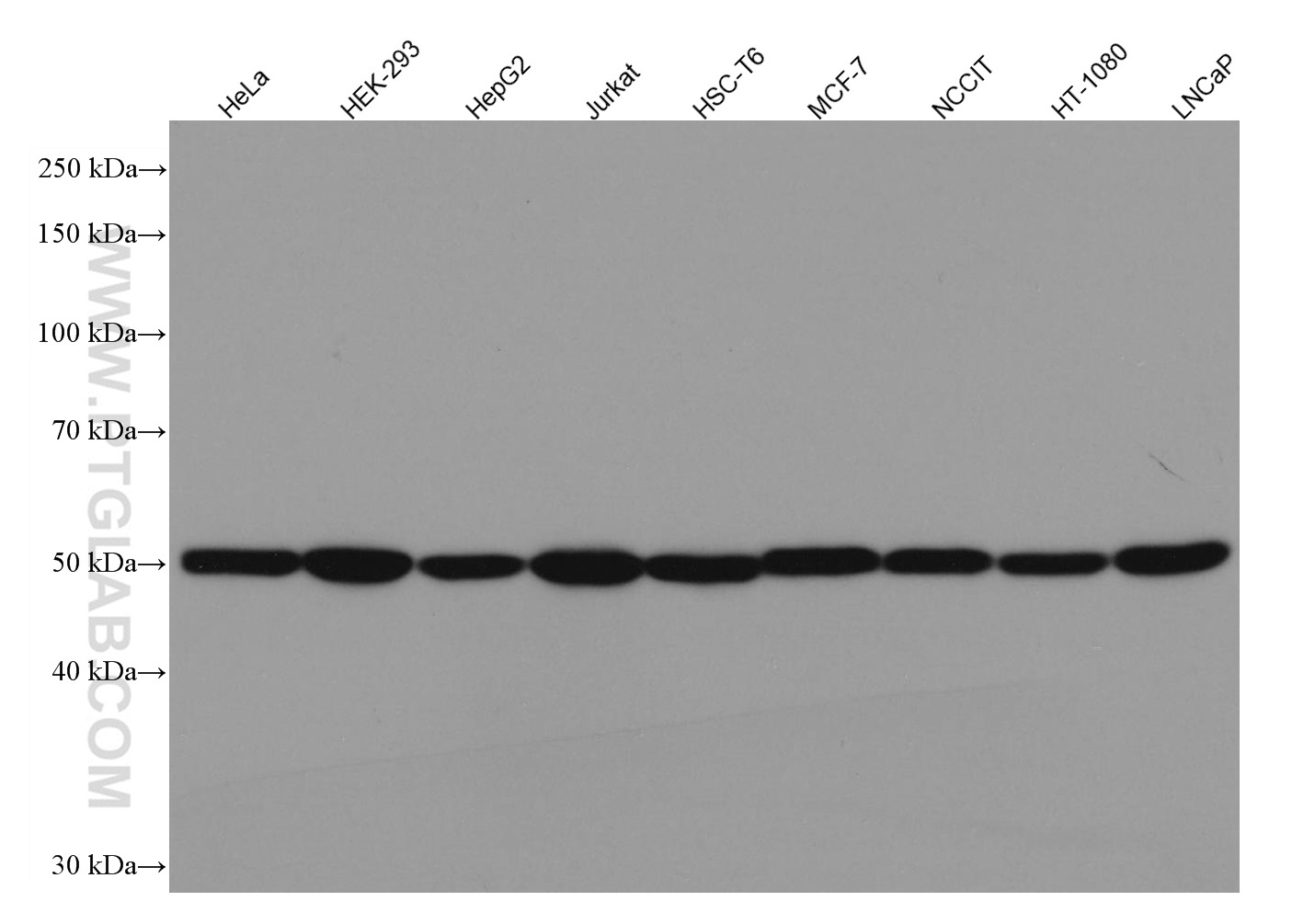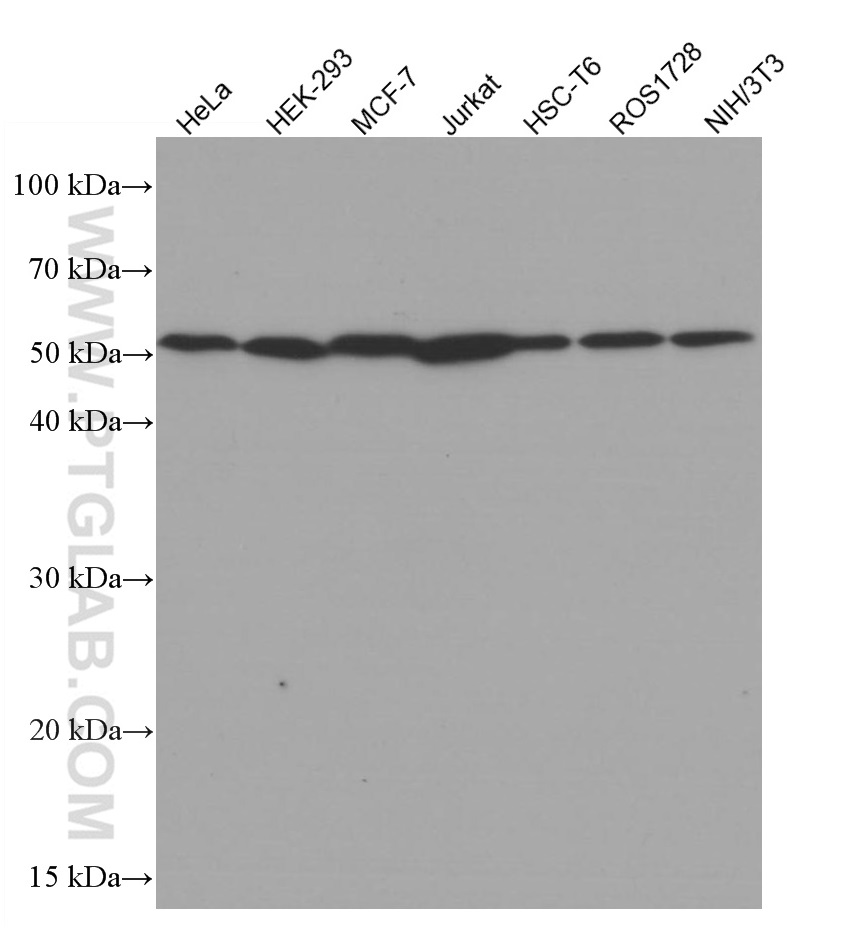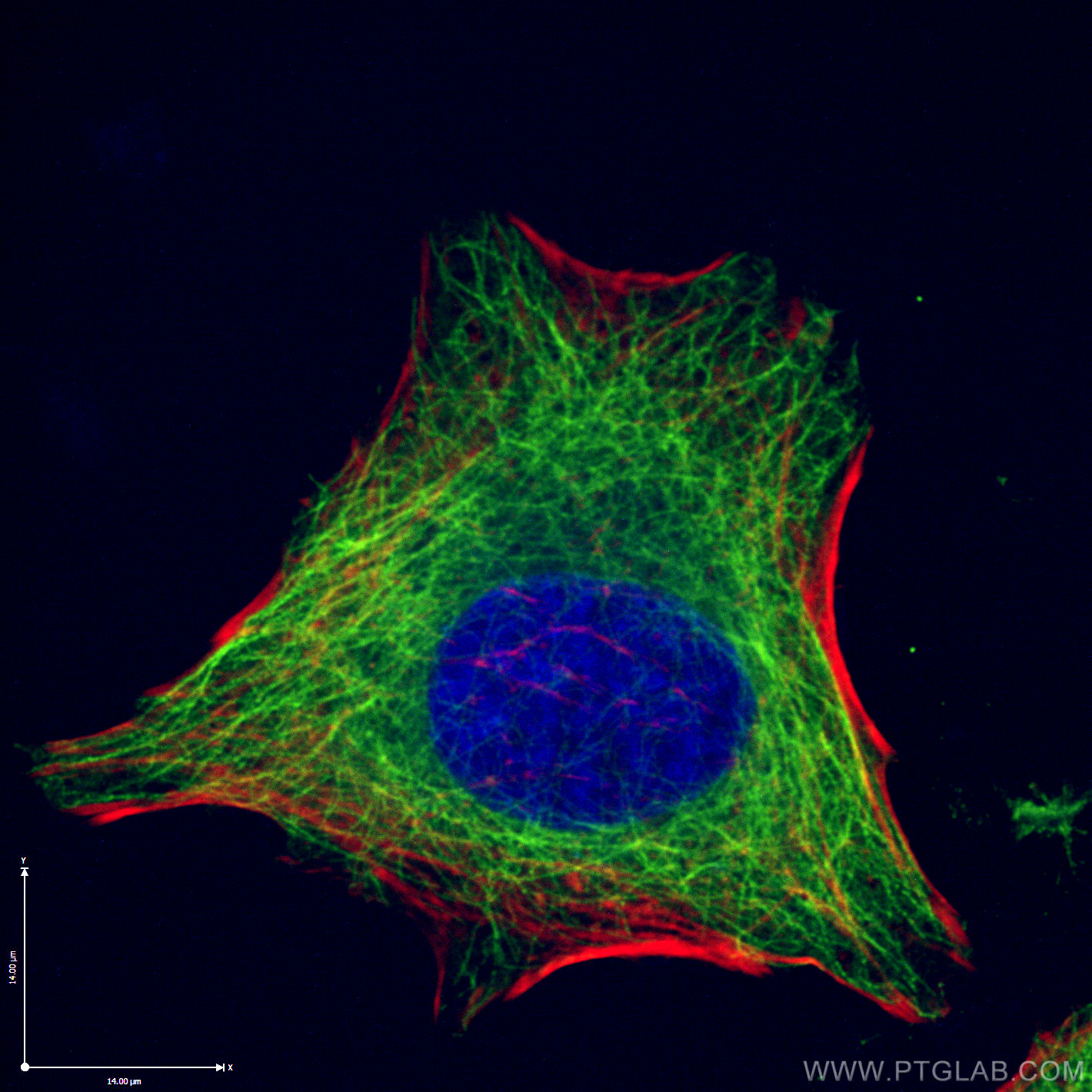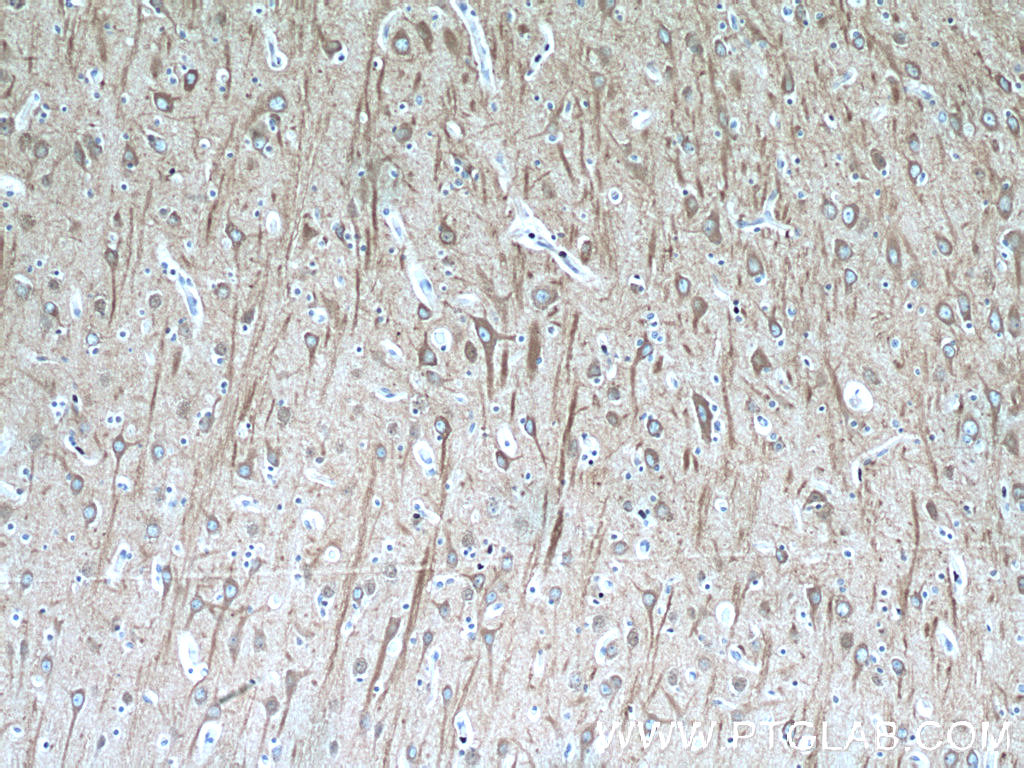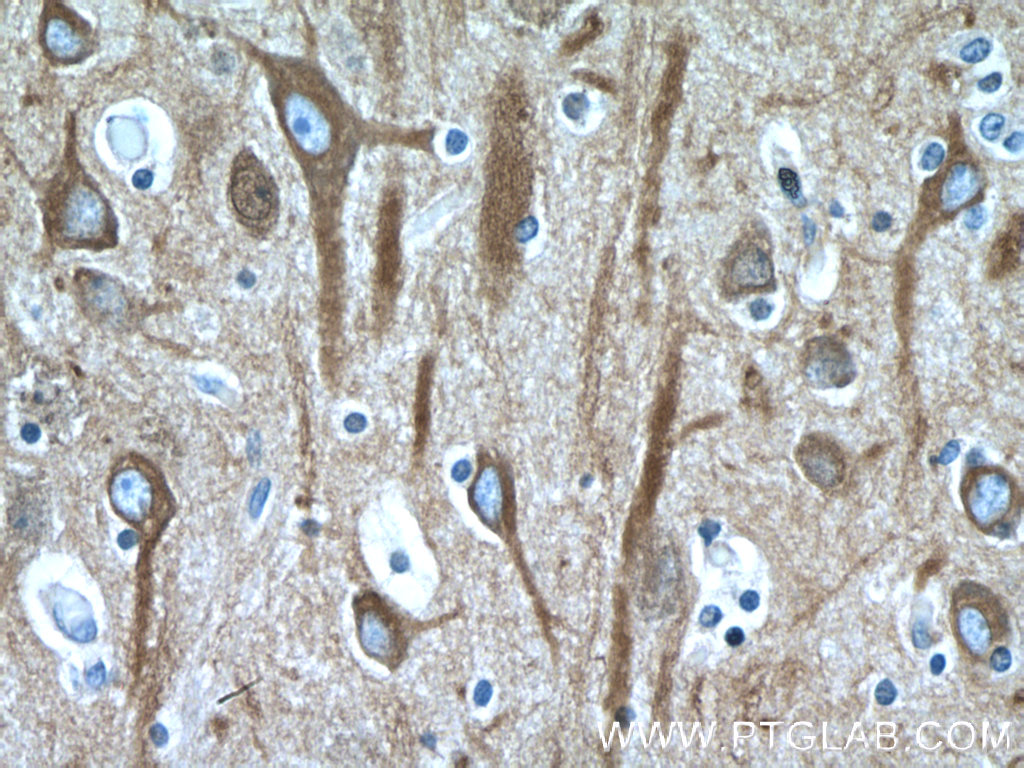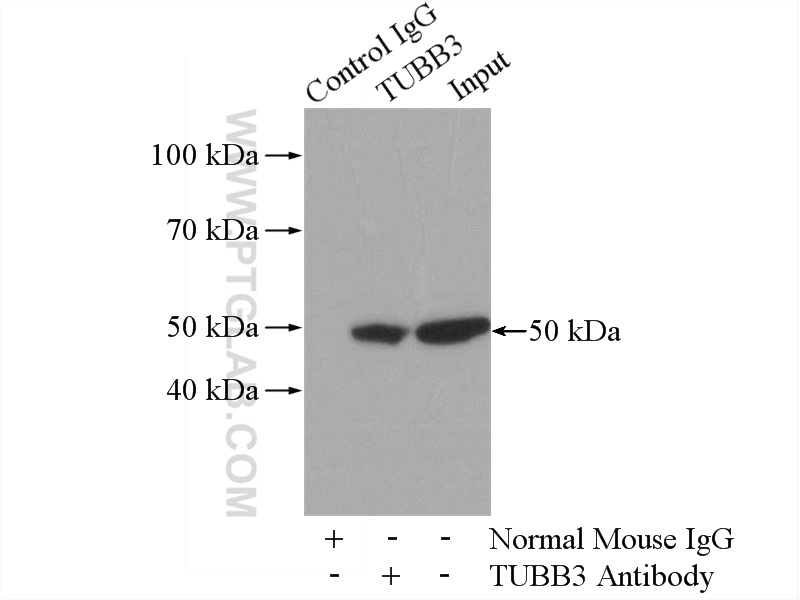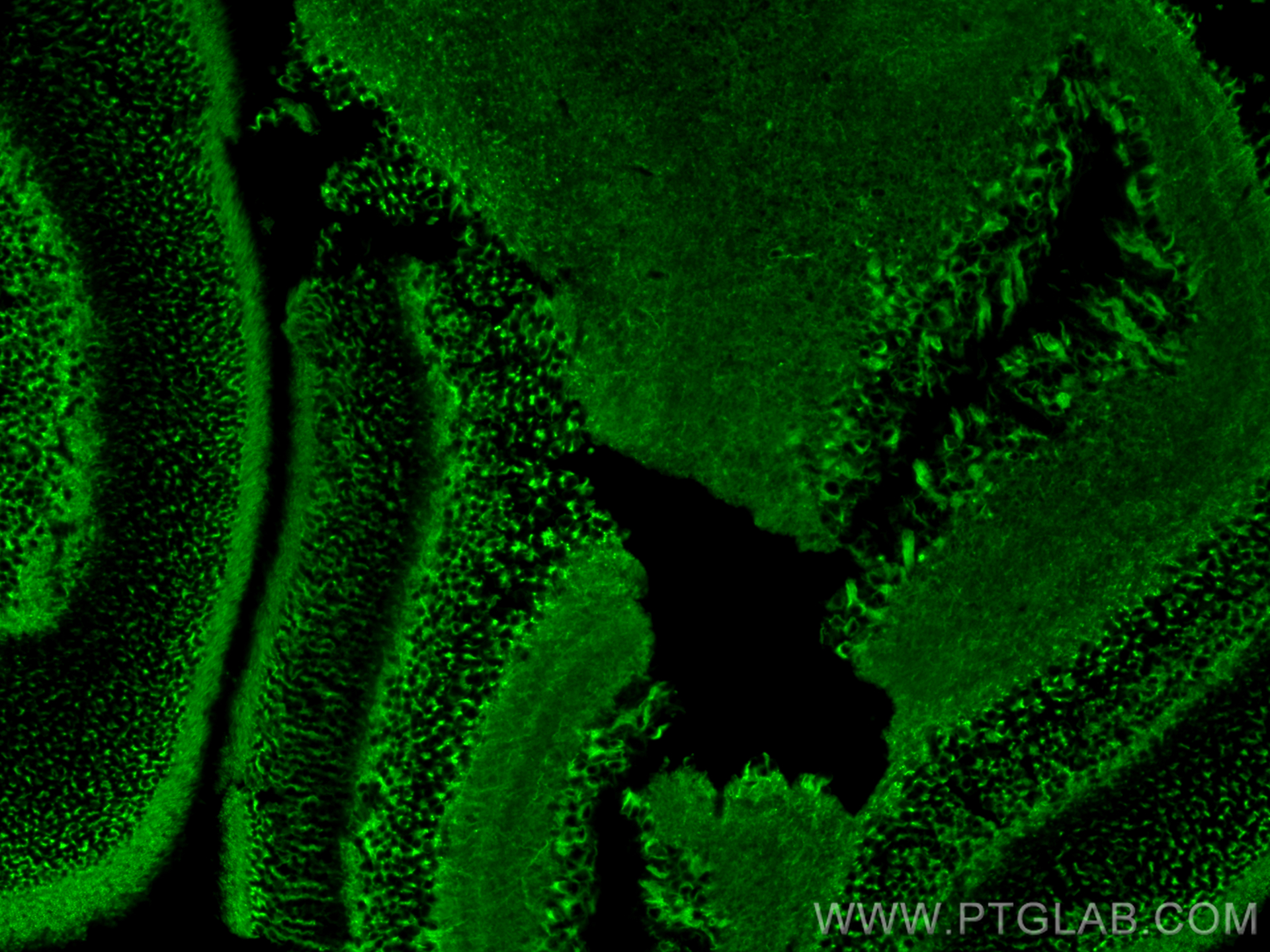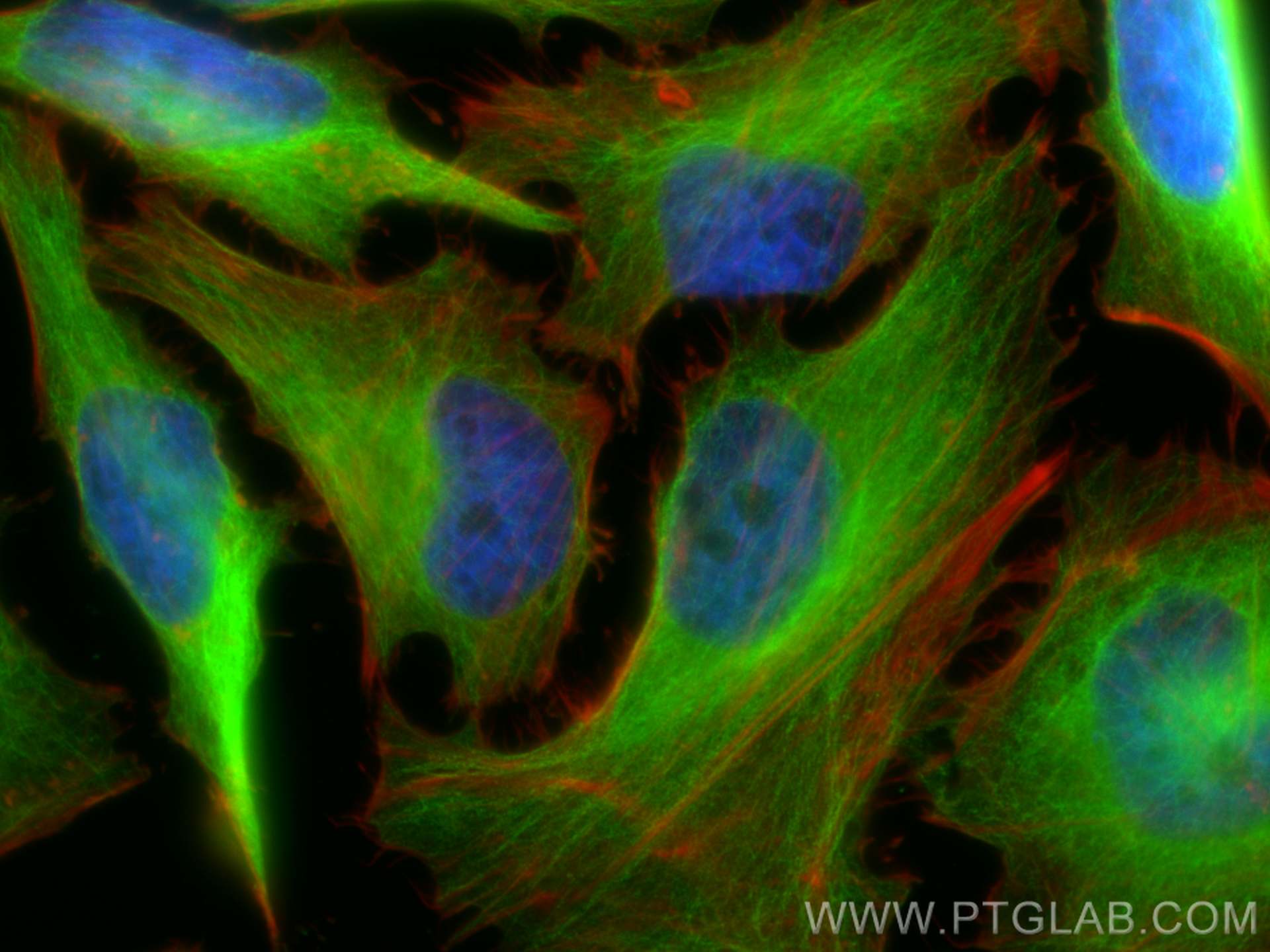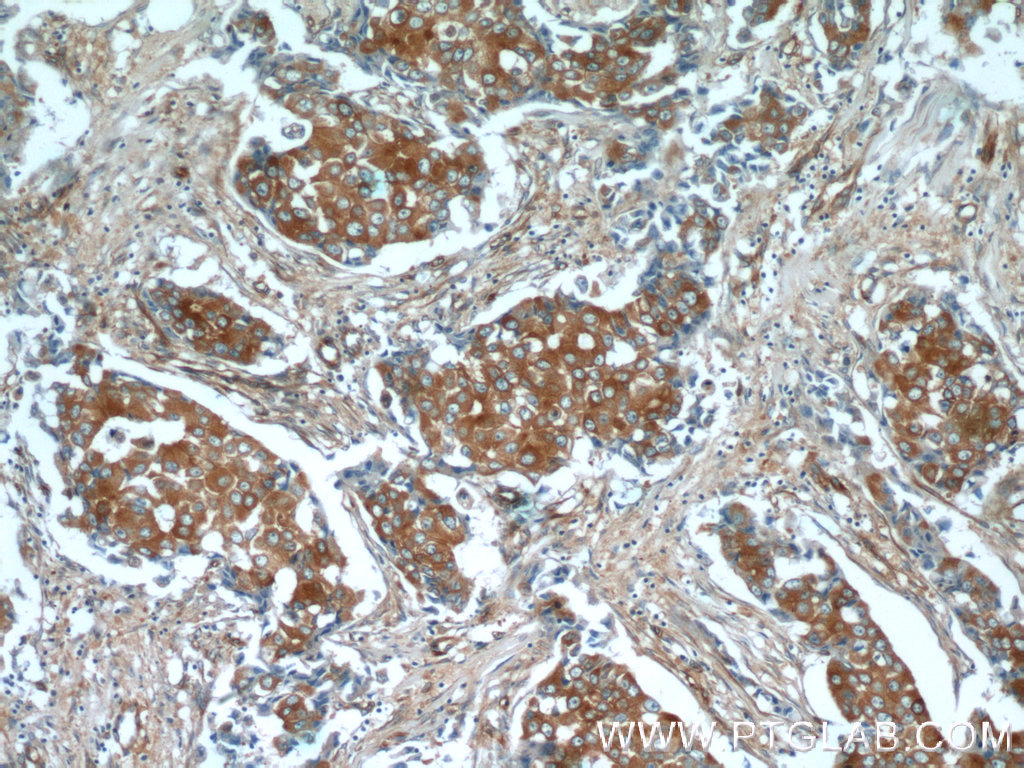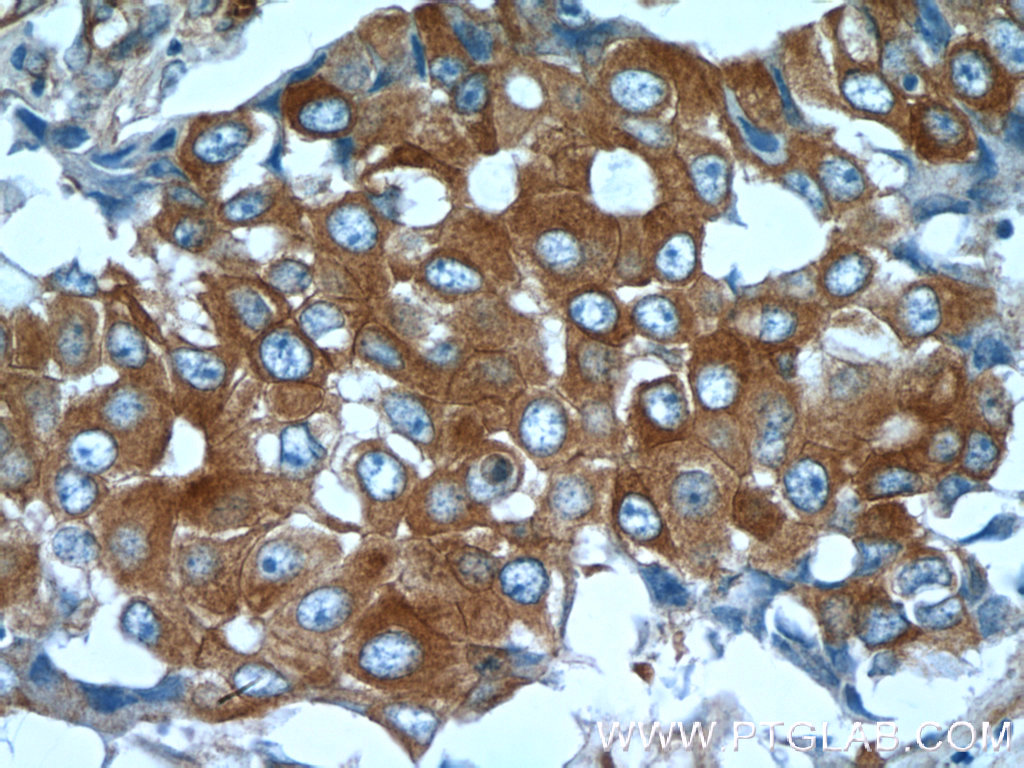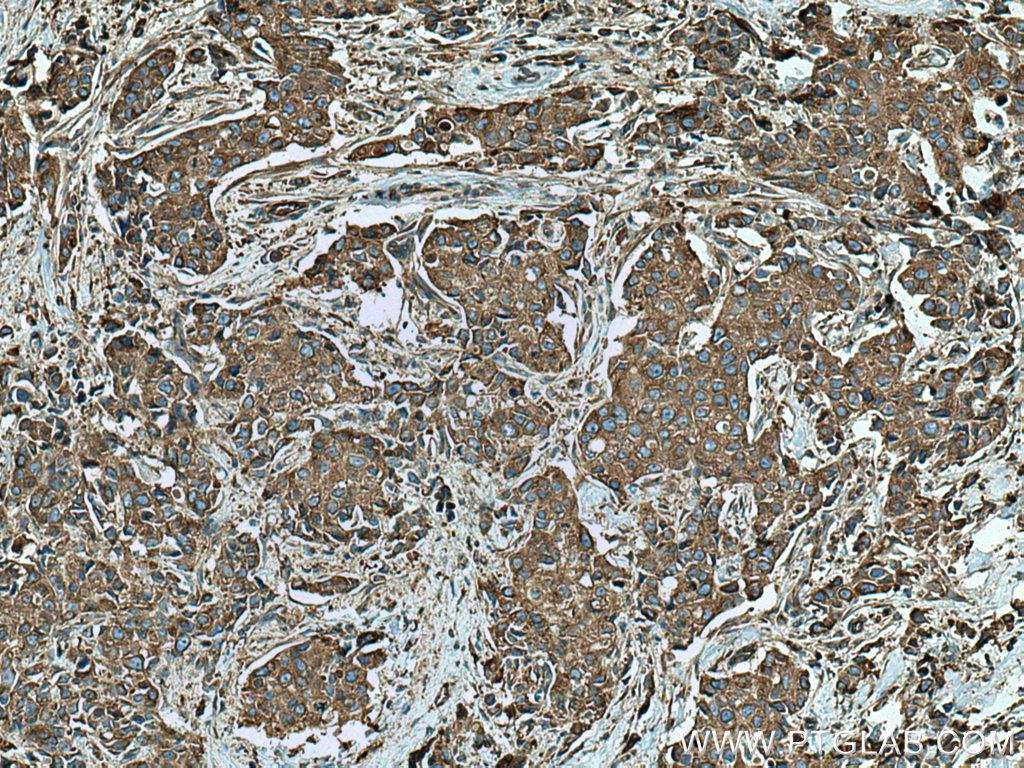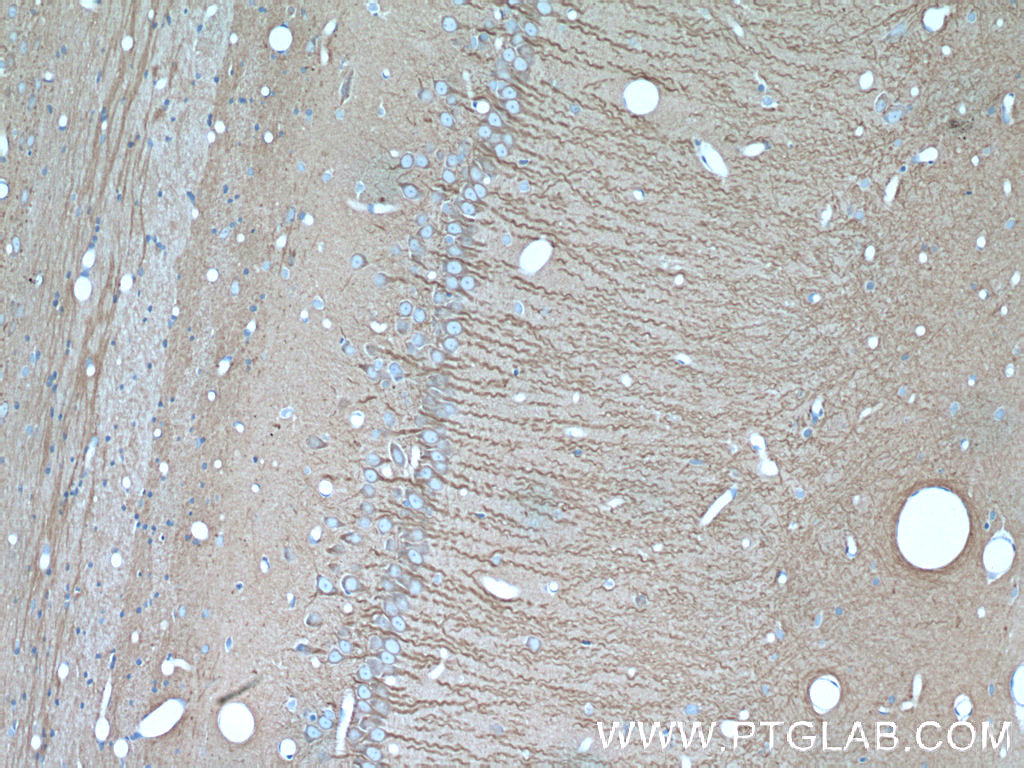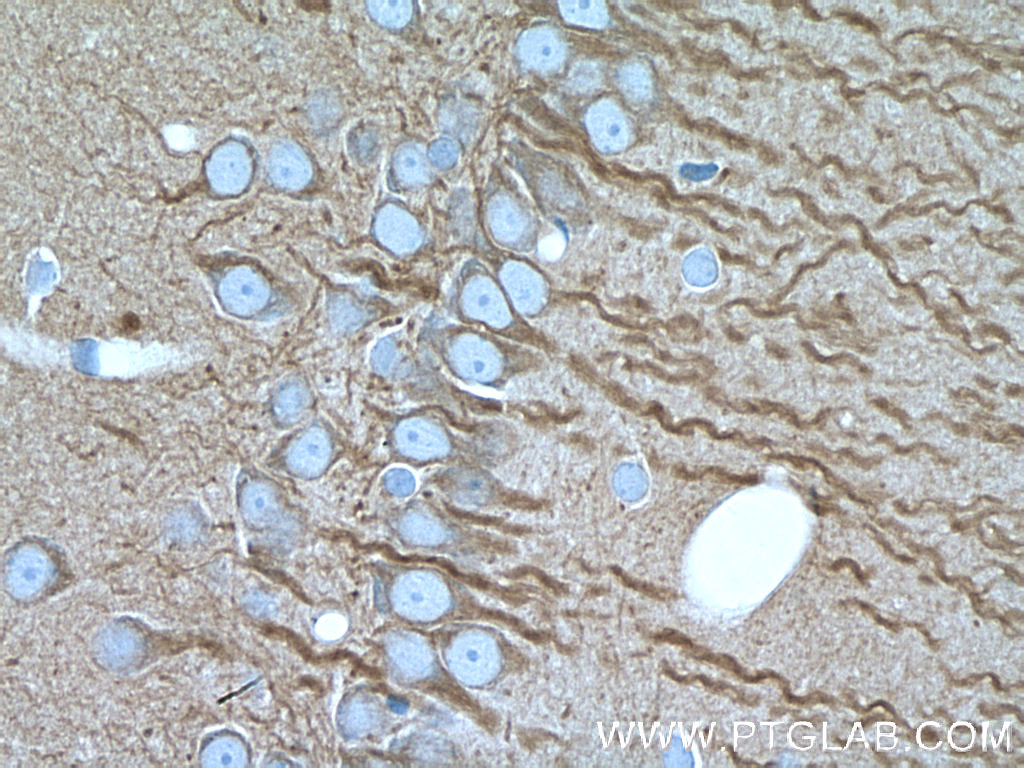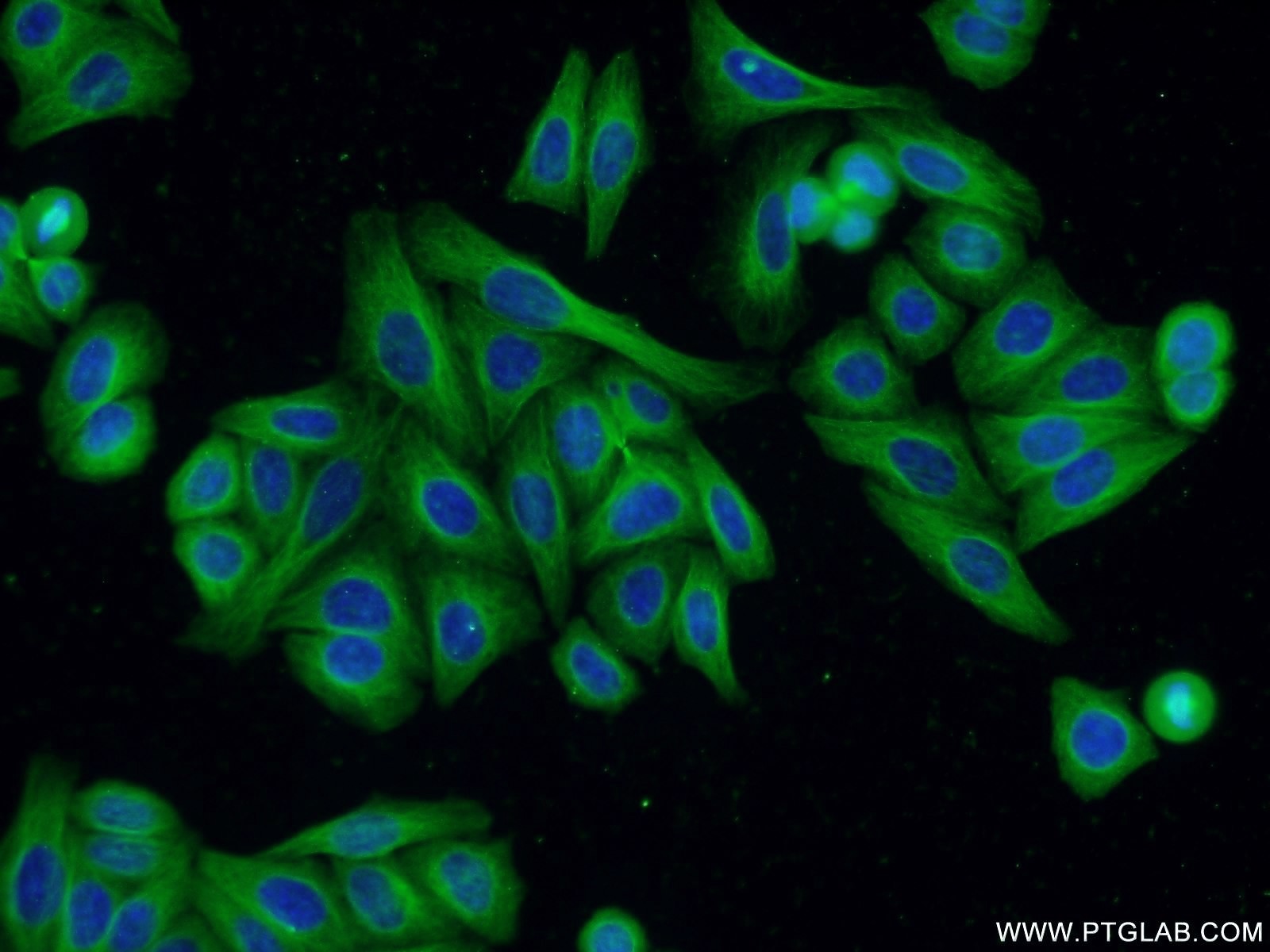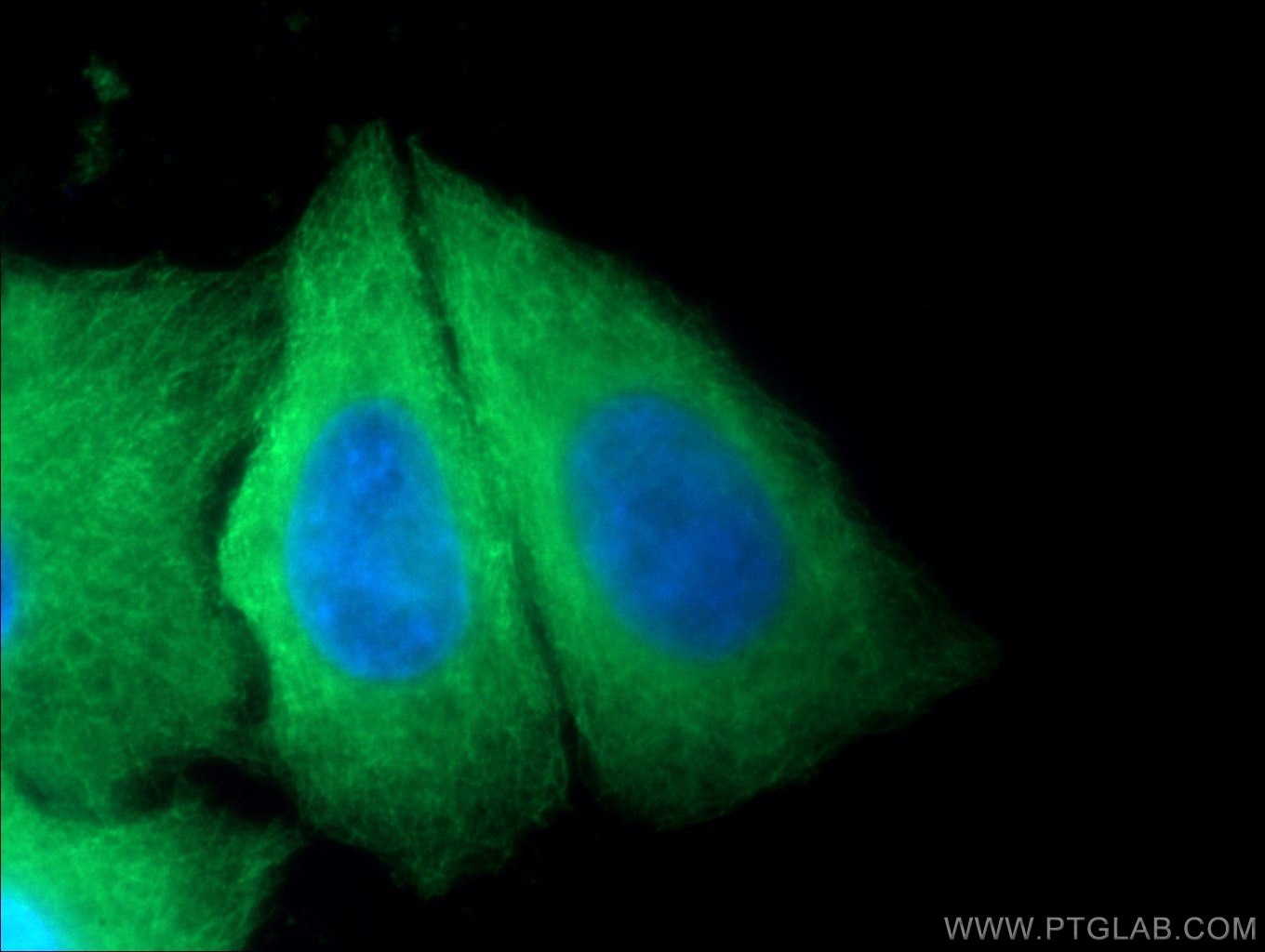验证数据展示
经过测试的应用
| Positive WB detected in | HeLa cells, HEK-293 cells, HepG2 cells, Jurkat cells, HSC-T6 cells, MCF-7 cells, NCCIT cells, HT-1080 cells, LNCaP cells, ROS1728 cells, NIH/3T3 cells |
| Positive IP detected in | HeLa cells |
| Positive IHC detected in | human brain tissue, human breast cancer tissue, rat brain tissue Note: suggested antigen retrieval with TE buffer pH 9.0; (*) Alternatively, antigen retrieval may be performed with citrate buffer pH 6.0 |
| Positive IF-P detected in | mouse eye tissue |
| Positive IF-Fro detected in | mouse brain tissue |
| Positive IF/ICC detected in | HeLa cells, HepG2 cells |
推荐稀释比
| 应用 | 推荐稀释比 |
|---|---|
| Western Blot (WB) | WB : 1:20000-1:100000 |
| Immunoprecipitation (IP) | IP : 0.5-4.0 ug for 1.0-3.0 mg of total protein lysate |
| Immunohistochemistry (IHC) | IHC : 1:20-1:1000 |
| Immunofluorescence (IF)-P | IF-P : 1:400-1:1600 |
| Immunofluorescence (IF)-FRO | IF-FRO : 1:200-1:800 |
| Immunofluorescence (IF)/ICC | IF/ICC : 1:200-1:800 |
| It is recommended that this reagent should be titrated in each testing system to obtain optimal results. | |
| Sample-dependent, Check data in validation data gallery. | |
产品信息
66240-1-Ig targets Beta Tubulin in WB, IHC, IF/ICC, IF-P, IF-Fro, IP, ELISA applications and shows reactivity with human, mouse, rat, pig, zebrafish, nematode samples.
| 经测试应用 | WB, IHC, IF/ICC, IF-P, IF-Fro, IP, ELISA Application Description |
| 文献引用应用 | WB, IHC, IF, IP |
| 经测试反应性 | human, mouse, rat, pig, zebrafish, nematode |
| 文献引用反应性 | human, mouse, rat, pig, rabbit, monkey, chicken, zebrafish, hamster, sheep |
| 免疫原 |
CatNo: Ag0117 Product name: Recombinant human Tubulin-beta protein Source: e coli.-derived, PGEX-4T Tag: GST Domain: 44-259 aa of BC000748 Sequence: LERISVYYNEASSHKYVPRAILVDLEPGTMDSVRSGAFGHLFRPDNFIFGQSGAGNNWAKGHYTEGAELVDSVLDVVRKECENCDCLQGFQLTHSLGGGTGSGMGTLLISKVREEYPDRIMNTFSVVPSPKVSDTVVEPYNATLSIHQLVENTDETYCIDNEALYDICFRTLKLATPTYGDLNHLVSATMSGVTTSLRFPGQLNADLRKLAVNMVP 种属同源性预测 |
| 宿主/亚型 | Mouse / IgG2a |
| 抗体类别 | Monoclonal |
| 产品类型 | Antibody |
| 全称 | tubulin, beta 3 |
| 别名 | Tubulin beta 3 chain, Tubulin beta III, 1D4A4, TUBB4, Tubulin beta-3 chain |
| 计算分子量 | 450 aa, 50 kDa |
| 观测分子量 | 50-55 kDa |
| GenBank蛋白编号 | BC000748 |
| 基因名称 | TUBB3 |
| Gene ID (NCBI) | 10381 |
| RRID | AB_2881629 |
| 偶联类型 | Unconjugated |
| 形式 | Liquid |
| 纯化方式 | Protein A purification |
| UNIPROT ID | Q13509 |
| 储存缓冲液 | PBS with 0.02% sodium azide and 50% glycerol, pH 7.3. |
| 储存条件 | Store at -20°C. Stable for one year after shipment. Aliquoting is unnecessary for -20oC storage. |
背景介绍
There are five tubulins in human cells: alpha, beta, gamma, delta, and epsilon. Tubulins are conserved across species. They form heterodimers, which multimerize to form a microtubule filament. An alpha and beta tubulin heterodimer is the basic structural unit of microtubules. The alpha and beta tubulins (+/- 55 kDa MW) are homologous but are not identical. Beta tubulins have been widely used as loading control.
What is the molecular weight of beta-tubulin? Are there any isoforms of beta-tubulin?
The molecular weight of tubulin is 50-52 kDa. Humans have eight beta-tubulin isotypes, encoded by different genes, that differ in their C-terminal sequences. They have different tissue expression profiles and can rise to microtubules of different properties (PMID: 20191564).
How to use beta-tubulin as a loading control
Beta-tubulin is one of the most commonly used references as a loading control for cell lysates in western blotting. It is abundantly expressed across various tissues and developmental stages and highly conserved across species. However, since some variability has been observed in the expression levels of commonly used housekeeping genes (PMID: 15627964), it is recommended that more than one loading control antibody is used while developing new assays. More information can be found here: https://www.ptglab.com/news/blog/loading-control-antibodies-for-western-blotting/.
What drugs can influence beta-tubulin and organization of microtubules?
Many drugs that affect microtubule dynamics target beta-tubulin, mainly by interfering with the GTP hydrolysis (PMID: 21381049). Paclitaxel (Taxol) is used to stabilize microtubules by slowing down their depolymerization, while colchicine and vinca alkaloids (vinblastine) destabilize microtubules. They are used in research and also in the clinic as anti-cancer agents.
Is beta-tubulin post-translationally modified?
Yes, tubulins are subject to extensive post-translational modifications (PTMs) that affect the organization of microtubules and their dynamics. The most common modifications include polyglutamylation, polyglycylation, polyamination, glycososylation, glycation, phosphorylation, and acetylation (PMID: 24801181 and 25468068).
实验方案
| Product Specific Protocols | |
|---|---|
| IF protocol for Beta Tubulin antibody 66240-1-Ig | Download protocol |
| IHC protocol for Beta Tubulin antibody 66240-1-Ig | Download protocol |
| IP protocol for Beta Tubulin antibody 66240-1-Ig | Download protocol |
| WB protocol for Beta Tubulin antibody 66240-1-Ig | Download protocol |
| Standard Protocols | |
|---|---|
| Click here to view our Standard Protocols |
发表文章
| Species | Application | Title |
|---|---|---|
Nat Biotechnol Magnify is a universal molecular anchoring strategy for expansion microscopy | ||
Science A prometastatic splicing program regulated by SNRPA1 interactions with structured RNA elements. | ||
Adv Mater A Physiologically Responsive Nanocomposite Hydrogel for Treatment of Head and Neck Squamous Cell Carcinoma via Proteolysis-targeting Chimeras Enhanced Immunotherapy | ||
Gut Integrative multiomics enhancer activity profiling identifies therapeutic vulnerabilities in cholangiocarcinoma of different etiologies |

